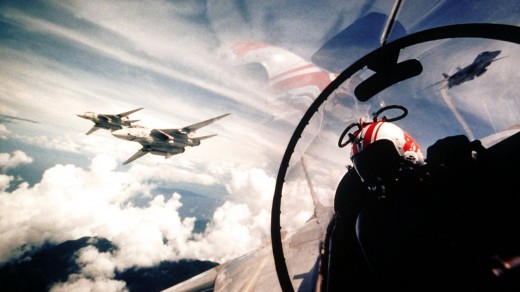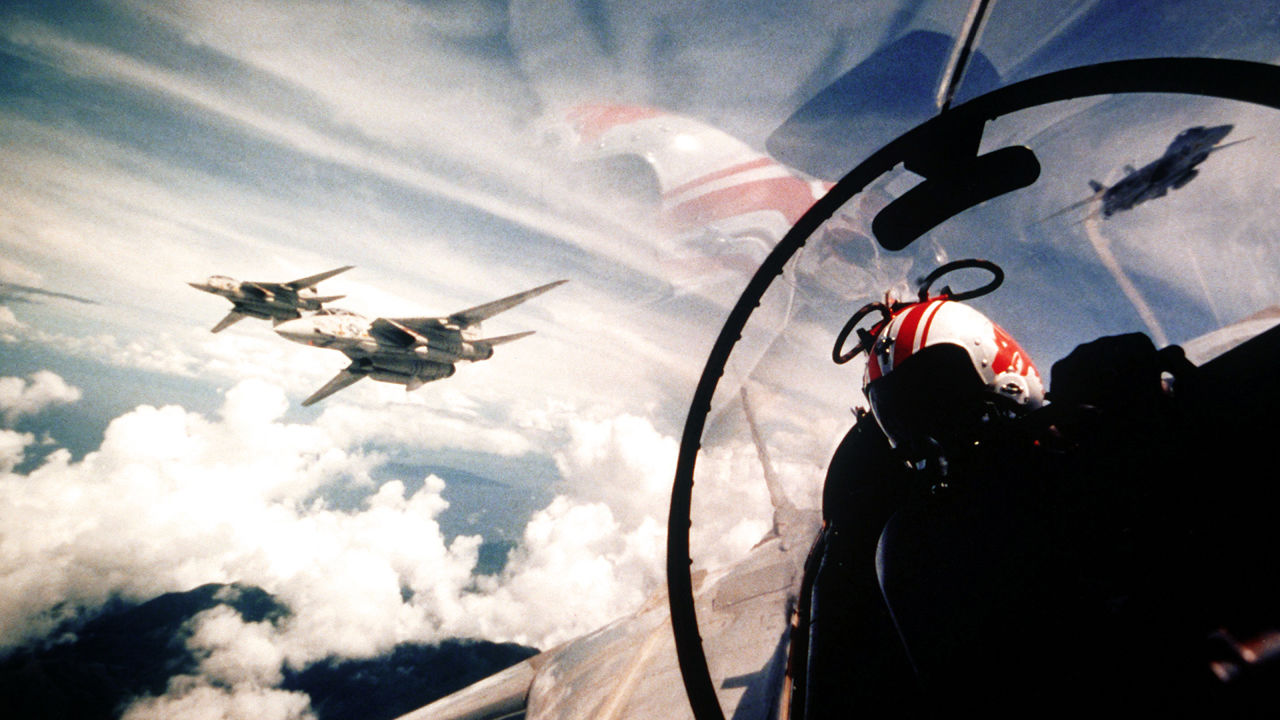leadership lessons From probably the most First female Fighter Pilots
Carey Lohrenz become one of the first feminine combat pilots in the Navy by way of no longer taking no for an answer.
February 27, 2015
On the outside, it might not appear to be Carey Lohrenz‘s outdated place of job has a lot in common with the rhythms and interactions found within the conventional modern office.
That’s as a result of, back within the ’90s, her job as a naval aviator meant she spent most of her time within the cockpit of an F-14 Tomcat, a beast of a fighter jet armed to the teeth with a machine gun and missiles with a range of more than one hundred miles. during her time in the Navy—nearly 9 years, beginning when she was 22—the F-14 was the most efficient supersonic strike fighter, and working it, ultimately getting the possibility to keep an eye on that stick within the cockpit, was once the fruits of an ambition Lohrenz had nurtured due to the fact that she used to be younger.
She’s the daughter of a former Marine Corps pilot, the sister of a naval aviator, and the wife of a former Marine Corps pilot. She set her thoughts early to incomes her wings—never thoughts the ban on girls flying fight aircraft that used to be still in location when she first began coaching at Aviation Officer Candidate faculty in Pensacola, Florida.

For the 6-foot-tall Wisconsin native with an iron will who beloved to fly, it didn’t matter. She had a plan: Don’t wait for an invitation or for the ban to be lifted. Get in the combine anyway, full the desired coaching, preserve your head down, and take a look at to complete on the high of the class. Then, if the door opens, you’ll be prepared.
And that’s precisely what happened. When the fight exclusion coverage that banned girls from fight aircraft assignments was lifted in 1993, Lohrenz used to be already in line and was probably the most first female combat pilots in the Navy assigned to fly the F-14 Tomcat.
How she did it was once via a reliance on ideas she shares this present day as a expert for industry leaders and major companies which have integrated AT&T, Comcast, dash, and TripAdvisor. She additionally wrote a guide about her experiences as a fighter pilot, Fearless leadership.
“That’s simple for you to say, you flew a fighter jet,” she says businesspeople inform her all the time. “after all you’re fearless.”
seems, although, the identical characteristics that helped Lohrenz consider in herself enough to go to flight school and earn her seat in a fighter jet might also help managers, company leaders, and industry owners harness their very own fears and do more than they think they may be able to.
“It begins with having that mindset that you aren’t outlined via any individual else’s barriers,” Lohrenz tells fast company. “no matter what boundaries or obstacles are in front of you, you go for it anyway. Or anyone else goes to be sitting for your dream job, since you have been afraid to step up and take a look at.”
some of the management rules she took far from her time in the Navy is this: “no one however that you could provide the permission to steer.”
across the time she used to be graduating from college and on the point of follow to the Navy, her brother was graduating from Aviation Officer Candidate college. In 1990, she went all the way down to Pensacola for his commencement and met up with some of his chums—candidates to transform pilots, like him.
One evening, she went with a group of them to a bar on the Alabama-Florida state line, the flowers-Bama. After a few beers, the conversation commenced to glide freely, and the point of interest became to Lohrenz when the group realized she had ambitions of flying, just like them.
many of the guys there have been advantageous with the speculation, she recollects. Some notion it was cool. Some notion she was once loopy to check out. a number of said things like, “You appear way too nice—why would you need to do this?” but Lohrenz nonetheless recollects the one guy who was once “vehemently adverse” to the theory of her becoming a naval aviator. “girls should be the keeper of the house and domestic,” he declared, “and haven’t any business in combat.”
It was just considered one of many limitations to be ignored on her method to the cockpit. As she writes in Fearless leadership: “that you could’t merely name on braveness when it’s handy for you. braveness is sort of a muscle. It needs to be exercised day by day. . . . Get in the enviornment. Take the initiative and take action. if you don’t boldly take the first step, whether or not it’s appearing with self assurance to your group or accepting the problem to talk the unpopular reality, how on the earth are you able to ever are expecting the individuals you result in do the identical? . . . leading requires that you now not most effective push thru your individual limiting limitations, but additionally push in the course of the worry of what people take into consideration you.”
She says that dialog within the plants-Bama—and there were lots of others like it—tweaked the little a part of her that lit up and replied, “You don’t think i will be able to do this? Watch me.”
still, “acts of bravery don’t at all times take place within the cockpit at Mach 2,” she explains. “they may be able to happen on in any other case customary days, within the moments you probably have the courage to honor your voice, your instincts, and your passions as a pacesetter.”
despite the fact that Lohrenz believes management requires that you simply settle for the fact that you’re necessary of being a pacesetter, she doesn’t imply the very best leaders are free from any moments of doubt, hesitation, or self-consciousness. rather, as soon as leaders have mounted their own self-worth in their thoughts, they are able to get previous boundaries that might in any other case have tripped them up.
“If I’d have decided to wait until someone invited me to be a female fighter pilot—smartly, I’d still be waiting,” she says. “any individual else would have gotten there first. someone else would be living my dream.”
right here’s an instance of how she didn’t wait to be invited in. It used to be again in the summer of 1990, on a day when she used to be taking a reputedly endless battery of physical tests to qualify for Aviation Officer Candidate college, step one on the road to becoming a naval aviator.
all through one test, she used to be instructed to appear right into a laptop that tested eyesight, and to inform the teacher which ringlike object seemed closest to her. She looked closely and spoke back, “well, none of them.” they all seemed to be the same distance away. “Ah,” came the reply. “It looks like you don’t have any depth notion. That’s not an enormous deal. it’s good to at all times do something else, like be a nurse.”
And so the ebook seemed to close right then, prior to she’d even had a chance to prove herself. Which is why for the next month, somewhat than take no for an answer, she sought out different Navy- and Air drive-sanctioned optometrists and ophthalmologists to get her eyes retested. It turns out that her eyes have been wonderful.
She’d in fact failed the regional imaginative and prescient exam on account of dehydration. Her nerves were buzzing that day, and she or he’d forgotten to drink any water, and unbeknownst to her, dehydration can have an effect on the ability to realize microscopic depth perception adjustments.
She didn’t overlook the lesson. She needed to cross badly enough that after she failed the first time, she requested herself, “i wonder if there’s some other check i will take?”
To sum up any other of her Navy-impressed principles in just one phrase: Act.
imagine, for example, the prerequisites through which Lohrenz operated. Upon takeoff, the jet rockets from zero to a hundred and eighty miles per hour in just below two seconds. Adrenaline blasts in the course of the pilot’s veins. Lohrenz tended to lean her head relatively ahead when taking off—if she leaned back on the headrest, she’d have whiplash for per week.
landing the jet on a carrier at night, she says, is one of the most harrowing experiences in all of armed forces aviation. And the stakes are excessive. Pilots in coaching most often get two opportunities to land a Tomcat on a carrier—fail each instances, and “your occupation as a naval aviator is basically over,” Lohrenz says, with the pilot bounced from a provider-primarily based squadron.
“that you can in truth taste your individual concern as you descend towards the pitching deck, knowing the again finish of the ship is coming up and down in 30-foot rises and falls,” she writes in Fearless leadership.
The landings are principally managed crashes. She’s found that nothing compares to the experience. And the only thing that even slightly mitigates the tension and anxiety? Doing it again. And once more. In other words, a hit aviators—like a success businesspeople, of all stripes—are the ones who punch thru their concern, who act, who preserve getting back within the cockpit, as difficult as it’s, and stick some other touchdown.
“the difference between who you might be and who you wish to have to be is what you do,” Lohrenz says. “when you’re seeking to come aboard a pitching ship in a strike fighter aircraft at 165 miles per hour or getting launched by means of a catapult, going from zero to greater than one hundred eighty miles per hour in lower than two seconds—and the air boss screams during the radio, ‘Tomcat off the bow! Eject! Eject! Eject!’—there is not any grey space. you have to take motion.
“This bias for action is as essential to survival in trade as it’s in aviation. Fearless leaders can’t wait to look how issues go. they are able to’t grasp back. they’ve to move ahead. they have to act.”
(169)














